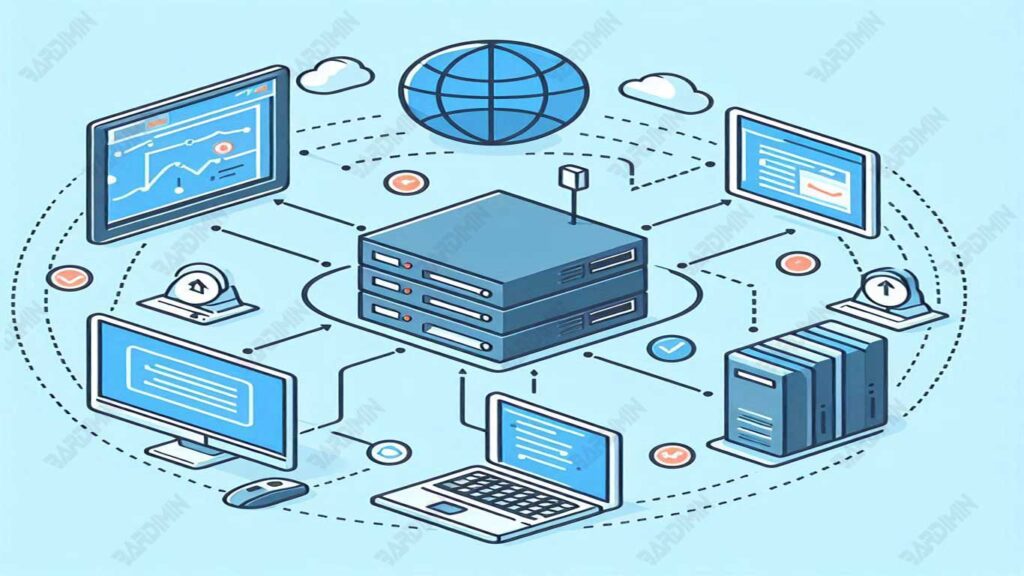A computer network is a collection of hardware and software that allows computers to communicate with each other, and share data, and resources such as printers and internet connections.
Information flows through those networks, allowing network users to exchange documents and data with each other, print to the same printer, and generally share any hardware or software connected to the network. A node is a computer, printer, or other peripheral device connected to the network. A network can have tens, thousands, or even millions of nodes.
This network can be a local area network (LAN) that covers a limited area such as a single building, or a wider network (Wide Area Network / WAN) that covers a larger geographic area.

Using computer networks has many benefits, including improving work efficiency by allowing quick and easy access to data and resources. Computer networks also facilitate better communication between users in different locations, support team collaboration, and reduce operational costs through more efficient use of resources. In addition, the network enables the centralization of data, improves data security, and supports automatic data backup, which is critical for businesses and organizations.
Main Components of Computer Networks
Node
Nodes are basic components in a computer network that serve as a connecting point between other devices. Each node can be a computer, printer, server, or other device connected to the network. Nodes act as senders and receivers of data, allowing information to move through the network.
Node Roles:
- Data Sender: A node can send data to other nodes in the network.
- Data Receiver: Nodes can also receive data from other nodes.
- Data Flow Organizer: Nodes help organize the flow of data within the network, ensuring that data reaches its destination effectively.
Cabling
The commonly used types of network cables are Twisted-pair and Thin Coax.
Twisted-Pair (10BaseT):
- A twisted-pair cable consists of 8 wires connected in two pairs of twisted wires. These cables are relatively inexpensive and easy to install.
- Advantages: Inexpensive, flexible, and ideal for short distances.
- Disadvantages: Twisted-pair cables have a lower data transfer speed compared to other cables.
Thin Coax (10Base2):
- Thin coax cables are made of copper and have a larger diameter than twisted-pair cables. This cable is often used to connect the VCR to the TV.
- Advantages: Can be used for longer distances and has a higher data transfer speed.
- Disadvantages: More expensive and more difficult to install than twisted-pair cables.
Network Interface Card (NIC)
A NIC is a piece of hardware that allows a computer to connect to a network. The NIC serves as a link between the computer and the network, converting the data that will be transmitted through the network into electronic signals that can be understood by other network devices.
There are two types of NICs:
- Cable NICs that use a physical connection via Ethernet cable
- A wireless NIC that uses radio waves to connect to a Wi-Fi network.
Hub
A hub is a device used to gather multiple computers into a single network. The hub allows multiple computers to share resources and communicate with each other.
Types of Hubs:
- Hub Ethernet Standard (10Mbps): Used for standard Ethernet networks with a speed of 10Mbps.
- Hub Fast Ethernet (100Mbps): Used for Fast Ethernet networks with a speed of 100Mbps.
The Hub allows users to build larger networks with tens, hundreds, or even thousands of nodes.

